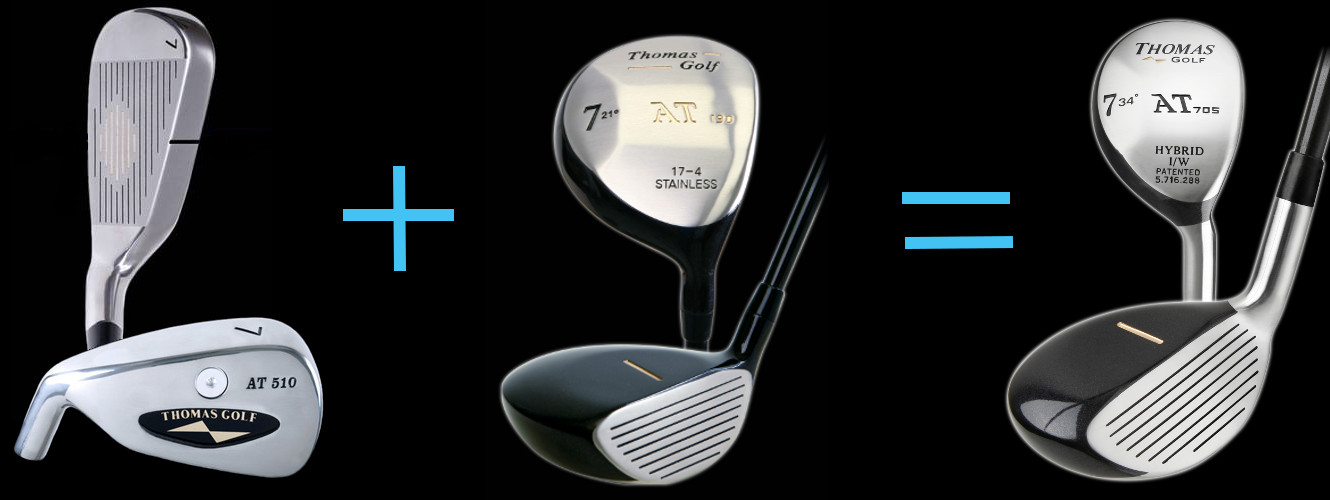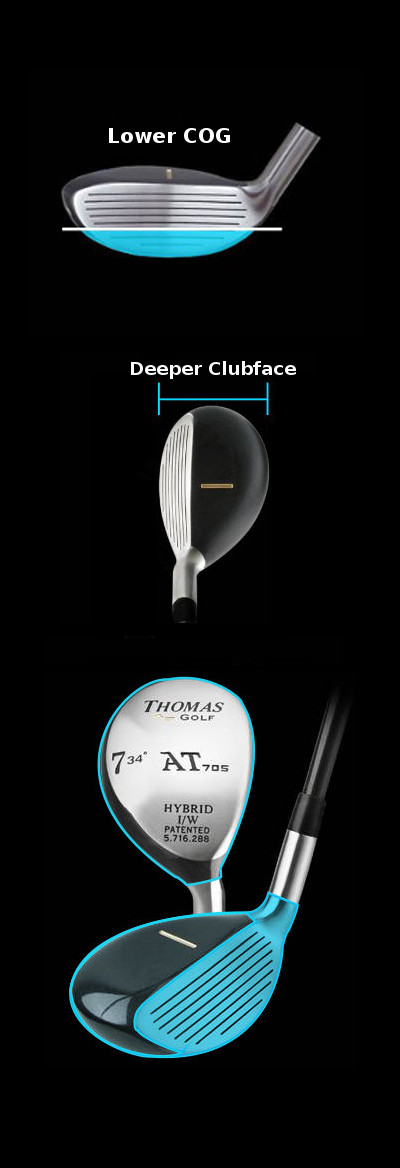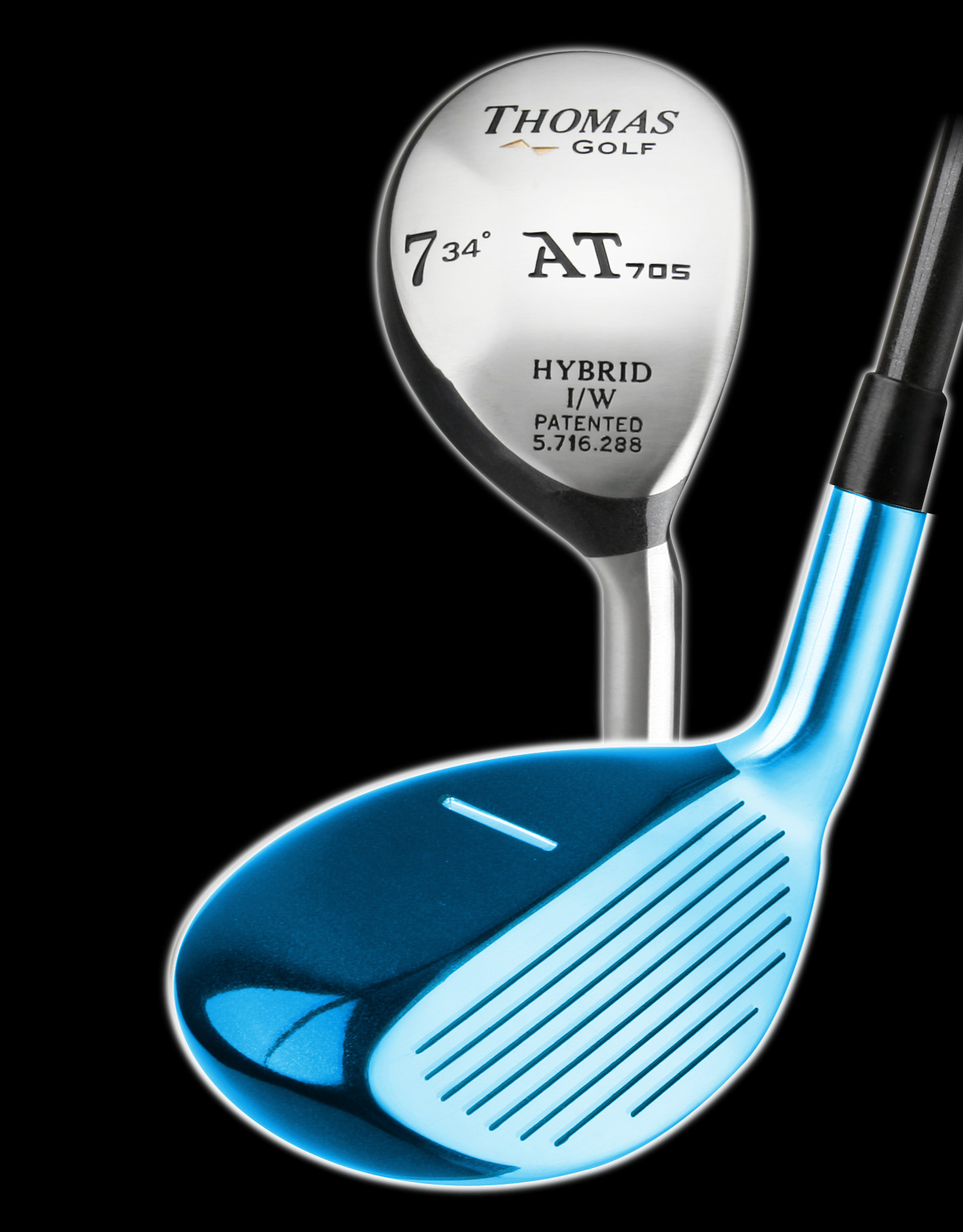
“Everything old is new again.” The saying certainly applies to golf.
Take hybrid clubs, for example. These iron-wood combinations may seem like a recent phenomenon, but they actually harken back to the tools of a bygone era. The wooden-shafted “baffy” and “brassie,” with their long clubfaces and rounded heads, were remarkably similar to the modern hybrid.
Of course, you wouldn't consider putting those ancient clubs in your bag, so hybrids are the way to go. When their meteoric rise to popularity began in the 1990s, hybrids were regarded as something of a novelty -- clubs created for high-handicap golfers who struggled to make solid contact with the long irons. That stigma is long gone now that a majority of tour pros have joined the hybrid revolution.
If you haven't yet replaced your 2-, 3- and 4-irons with comparable hybrids, it's probably time you did. If you've got longer hybrids (2 through 4) in your bag but have trouble hitting crisp shots with the middle irons or even short irons, hybrids could be the answer.
Fact is, an iron's thin top line and straight face don't always inspire confidence. On the other hand, a hybrid sets up with a friendlier profile; its broad, curved back, soft sole and lighter weight give the appearance and feeling of forgiveness and ease. That translates into better swings.
If you're interested in replacing additional irons with hybrids, buy a custom 7-hybrid. On the range or indoor hitting area, place it next to your own 7-iron. They're likely identical or very close in length and loft, so they'll produce shots of similar distances. Hit a few balls with your 7-iron, paying attention to the look and feel at address. Then do the same with the 7-hybrid.
Which club makes you feel more confident? Which did you hit more solidly? Higher? Straighter?
If the 7-hybrid delivers better results than your 7-iron, give higher-lofted models a try, too. Companies like Thomas Golf offer hybrids suitable for replacing every iron in a traditional set, all the way up to a 55° sand wedge.
You may discover that hybrids are your best bet throughout the bag, or that you prefer to stick with conventional mid- and short irons. Chances are, you'll perform best with the club that most appeals to your senses.

Hybrids Head Design Can Inspire More Confidence
When they first hit the market, hybrid clubs were seen as an option for high-handicap players, and those new to the game. This was because they were, and still are, easy to hit. Unlike long irons, which have always presented a challenge to the majority of golfers, hybrid clubs could produce long shots while offering forgiveness at the same time. They might not have been an overnight success, but it didn't take all that long for hybrid clubs to catch on with much of the golfing population. In fact, their popularity went far beyond initial expectations, to the point where many professionals decided to place these kinds of clubs in their own bags.
One of the many driving forces behind the popularity of hybrid clubs is their design. When you look down at address, you will likely be filled with confidence, as the club appears ready to handle the task at hand. That is not always the case with a long iron. If you've ever attempted to hit a long iron, you already know they look intimidating at address, and they can strike fear into otherwise competent golfers. It is important to have confidence on the golf course, and using a hybrid club can quickly raise your level of confidence prior to making a swing.
In this article, we are going to talk about hybrid clubs and why they are able to provide average golfers with such positive feelings. What is it about the performance of these kinds of clubs that makes an average golfer expect great results? Why are they a better choice than long irons for most players? We will answer those questions and more in the content below.
If you don't yet carry a hybrid club or two in your bag, now is a good time to consider trying one for yourself. No longer a new player in the golf equipment market, the capabilities of hybrid clubs have been proven for well over a decade. It isn't by accident that these have become a common sight in golf bags around the world. They are relatively easy to hit, they offer a great combination of height and distance on your shots, and they are more versatile than you might expect. If you are tired of hitting disappointing shots with your long irons, turning to hybrids is a choice you are unlikely to regret.
All of the content below has been written from the perspective of a right-handed golfer. If you happen to play left-handed, please take a moment to reverse the directions as necessary.

A Purposeful Design
As you might expect, the design of a hybrid club head is no accident. Rather, this type of club has been purpose-built to accomplish a specific set of goals. By using elements that were able to promote the desired outcome, those who built the first hybrid clubs were able to bring to market a club that was beneficial to many different players. Of course, since this type of club broke onto the scene, many different variations have become available. Despite the many different models you can pick from, the basic shape of a hybrid club head has changed little over the years.
So, what exactly is a hybrid club meant to accomplish? Let's take a look at the key performance features of this category of golf clubs.
- Hit the ball high. This is one of the main objectives of a hybrid club, and one of the things which separates this category from long irons. Unless you have a rather high swing speed, you are always going to struggle to hit a long iron high in the air. That is not the case when using a hybrid. With a hybrid, you should have little trouble hitting your shots high, thanks to the large percentage of weight located in the bottom of the club. With a low center of gravity, a hybrid is naturally going to want to hit the ball high, as long as you make a decent swing. The type of swing speed required to hit the ball high with a long iron is not necessary to do the same thing with a hybrid club. Since high long shots tend to be far more useful than low long shots, the ability to get the ball up off the ground with ease is one of the main selling points of the hybrid category.
- Produce consistent results. Another common problem with long irons is their inability to produce consistent results from shot to shot. Or, put another way, the inability of the golfer to produce consistent shots with the long irons. Long irons are hard to hit, and you need to strike them just perfectly in order to achieve the desired result. If you hit the ball a little bit in off the heel, or a little bit out off the toe, you are going to be punished for your mistake. The story is different with hybrids, however. These types of clubs provide some nice forgiveness, allowing you to make small mistakes and still come away with quality results. No golf club is going to make up for a terrible swing, but hybrids can take your mediocre swings and produce solid outcomes.
- Deal with a variety of lies. Adding to the list of shortcomings with regard to long irons is the fact that they don't deal very well with anything but a clean lie. You can use them from the tee, of course, and they work nicely from the fairway, but that's it. If your ball strays into the rough, you can almost certainly forget about using a long iron with any kind of success (unless you are a high-level player). When you swap out some of your long irons for hybrids, you'll be able to hit long shots from a wider variety of lies. Hybrids still aren't a great choice from the deep rough, but light rough should be no problem at all. Also, if you happen to draw a bare lie, or a lie on some loose ground, a hybrid may be the perfect club to get you out of trouble. Since you never know exactly what kind of lies you are going to find on the course, it is helpful to have clubs in your bag which are up to the challenge of as many different lies as possible.
Hybrid clubs are able to produce a wider variety of shots than long irons, and they are much easier to use as well. When viewed this way, it should be no surprise at all that these clubs have become so popular. But how do they get the job done? Another quick list will highlight the design elements that allow hybrids to perform so impressively.
- A hollow head. Hybrid clubs take design elements from both fairway woods and irons, thus the 'hybrid' name. One of the design cues taken from fairway woods is the hollow head design. Irons are typically solid clubs, which means they are rather heavy and hard to swing quickly. By using the hollow-headed design, club makers allow golfers to swing the club more quickly through the hitting area, promoting greater distance and higher trajectories. Also, using a hollow head makes the club more forgiving, which is why you can get away with a miss-hit shot easier than you can with an iron.
- Weight in the sole. We alluded to this design element in our previous list. With a majority of the weight of the club head placed in the sole, hybrid clubs are able to get the ball up off the ground with ease. That concentration of weight can also help the club to move through the grass nicely, especially when playing from the short rough.
- Compact size. Unlike fairway woods, which have become rather sizable in the modern game, hybrid club heads remain modestly sized. This is a positive because they look great sitting behind the ball at address. Most golfers love the visual appeal of hybrid clubs, as they appear perfectly shaped to handle the job at hand.
It shouldn't be a surprise that hybrid clubs developed so successfully to fill a specific role on the course. Golf club companies have millions of dollars on the line when they design new clubs, and the hybrid category has been one of the great equipment success stories in recent memory. Simply put, club designers know how to appeal to golfers, and they did so brilliantly with the hybrid.

Setting Aside Your Long Irons
It can be a big step for some golfers to decide that they are going to set aside at least one or two of their long irons. There are powerful traditions at play here, as a set of irons is commonly thought to consist of eight clubs in total, from the three iron on up to the pitching wedge. While that tradition has now been broken by countless players – amateurs and pros alike – it is still difficult for some players to step away from the old norm.
If you find yourself having trouble committing to this path, think about your recent performance with your long irons. How confident do you feel in your long irons when you take them from the bag? Are these clubs which inspire confidence and optimism, or do you dread having to use them? You only get to carry 14 clubs under the rules of golf, so there isn't room to waste on clubs you don't trust.
The best advice we can offer here is to ignore tradition and simply carry the set of clubs which is likely to provide you with the best results. If you are one of the few players who does manage to get great results from your long irons, you should absolutely continue to use them. Be honest in your assessment, however, and you'll probably find that at least one or two of your long irons should make way for hybrid replacements. With so many benefits to speak of, and no notable drawbacks, going with hybrids in place of your three and four irons – and maybe even more – is probably going to be an easy decision in the end.
When you take the step of replacing some of your long irons, you don't want to think about matching up lofts as much as you want to think about distance. In other words, you don't need to buy hybrids which exactly replace the lofts of the clubs you are taking out of your bag. Rather, the goal is to find hybrids which will travel a similar distance to those clubs you are setting aside, so you can maintain relatively even distance gaps in your set. There is no point in having two clubs which travel the same distance, after all, so pay close attention to your gaps and shop for hybrids that will round out your set nicely.







